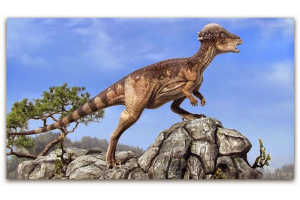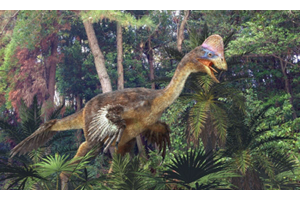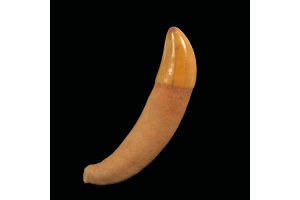Page 8 - Gary Greaser
- - August 05, 2025
There’s something wildly thrilling about holding a six-inch Megalodon tooth in your hand. It’s not just the sheer size—although let’s be honest, that alone is enough to make your jaw drop—it’s what that size represents. We’re talking about an apex predator that once ruled the oceans with all the subtlety of a tank and the elegance of a guillotine. If you’re a fossil enthusiast or collector, you already know these aren’t just teeth. They’re status symbols. Fossilized relics that demand attention like prehistoric crown jewels.
Now, you might wonder—how big was the Megalodon tooth, really?—and what makes one worth more than a pretty penny? Good question. Let’s dig in, with our gloves off and our curiosity on full blast.
The Crowned Kings of the Fossil World
We don’t toss around words like “royalty” lightly, but Megalodon teeth in the six-inch club have earned it. These are not your run-of-the-mill ancient relics; they’re elite, like the Ferraris of the fossil world. Not every Megalodon
- - August 05, 2025
Imagine a calm morning, the tide pulling back like a curtain on a quiet stage. The sand is damp beneath your shoes, and the breeze carries a scent of salt and mystery. There’s no sound louder than your breath or the gentle hiss of waves retreating. Yet beneath your feet lies a secret that predates everything around you—a silent relic of a predator that once ruled the oceans.
That’s when megalodon tooth hunting quietly enters your world, not with fanfare or flashing lights, but with the hush of something ancient waiting to be found. One moment, you’re scanning bits of shell and stone. The next, your fingers close around something curved, serrated, and unmistakably prehistoric.
There’s a transition, right then—not just in what you hold, but in how you see the world. Fossils aren’t things of the past; they’re whispers from it, surfacing through layers of time to meet you halfway.
Let’s take a walk along that whispering coastline together.
Why the Past Still Lingers Beneath Our Feet
Long
- - August 05, 2025
Beneath the glassy surface of the world's oceans lies a realm untouched by time. Long before humans walked the earth, prehistoric beasts reigned beneath the waves—among them, the colossal megalodon. This ancient predator lived during the Miocene and Pliocene epochs and is believed to be the largest shark to have ever existed. For centuries, scientists and collectors have been captivated by the stories its fossilized remains tell. One such story recently resurfaced in spectacular fashion.
With the megalodon tooth found off the coast of Chile—one of the largest ever unearthed—experts were given a rare glimpse into a time when the seas trembled under the might of a marine behemoth. The tooth, both massive and beautifully preserved, has sparked a renewed fascination with the enigmatic ruler of the ancient oceans.
The Mighty Predator of Prehistoric Seas
To understand the impact of such a find, we must look back into history, millions of years ago, to a time when the oceans looked different,
- - August 05, 2025
There’s something strangely captivating about holding a fossil in your hand—especially when that fossil belonged to the largest shark to have ever lived. The megalodon, an ancient sea predator, is no longer swimming in today’s oceans, but its fossilized teeth continue to draw curiosity, admiration, and even competitive bids. These triangular marvels of nature, often larger than a human hand, are considered prized collectibles.
While some see them as pieces of history, others collect them as investments or decorative treasures. Understandably, one of the most common questions people ask is how much a megalodon tooth costs, and the answer can be surprisingly complex.
The cost varies widely and depends on several factors, including size, condition, source location, and even mineral composition. Let’s take a deeper dive into the world of megalodon teeth and explore why they continue to capture imaginations across generations.
Size Shapes the Price
The first thing that often determines a megalodon
- - August 05, 2025
Florida’s land is a quiet storyteller. Its winding rivers and soft limestone beds cradle secrets from a time when the sea stretched farther inland, and creatures larger than any known today roamed its depths. Among these remnants is something both fierce and mesmerizing—evidence that once, an ancient predator ruled these prehistoric waters. Midway through the layers of phosphate-rich soil, nestled between ancient sediment and the pull of curiosity, lies a truly stunning relic: the Bone Valley Megalodon tooth.
Unlike many fossil finds that feel disconnected from their environments, this one tells a vivid story. It’s not simply about age or size—it’s about place, process, and the soft touch of time sculpting something magnificent. The Bone Valley region of central Florida, with its mineral-rich composition and unique preservation conditions, has become a treasure chest for fossil hunters, both professional and amateur.
This article takes you into the heart of what makes these teeth so extraordinary
- - August 05, 2025
Far below the crashing waves and sunlit ripples of the ocean’s surface lies a history that predates the earliest human footsteps. It's a world teeming with giants, creatures of immense strength and grandeur, long lost to time. Fossils serve as fragments of this era—silent storytellers preserved beneath layers of sediment. Among the most captivating of these relics is a black megalodon tooth, an extraordinary find that carries with it the weight of legend and the allure of the unknown.
Before diving deeper into the significance of such a fossil, let’s take a step back and understand what makes this particular tooth so compelling—not just to collectors, but to anyone with an eye for natural history.
The Story Behind the Tooth
Millions of years ago, during the Miocene and Pliocene epochs, oceans were ruled by a behemoth unlike any other—the Megalodon. This now-extinct shark species measured up to 60 feet in length, making it one of the largest predators to have ever existed. Unlike modern
- - August 05, 2025
Some things leave us in awe not because of their beauty, but because of the mystery they carry. Among the most fascinating relics of Earth’s ancient past is a stark reminder of one of the largest predators to have ever existed—the Megalodon. A single glance at an actual megalodon tooth can stir questions that stretch back millions of years. But how can we be sure what we’re holding is the real thing?
Let’s take a slow dive into the world of these ancient giants, uncover how to tell the real from the replica, and why it even matters to collectors and curious minds alike.
Fossil or Fake? Here's Where to Begin
Before we delve into identifying signs of authenticity, it's helpful to understand what you're dealing with. A Megalodon tooth is not simply a relic—it’s a preserved piece of a prehistoric predator. However, with demand rising and lookalikes flooding the market, it’s essential to approach with a careful eye.
Your journey starts with observation. Don’t be quick to judge—replicas are
- - August 04, 2025
Few fossils evoke the awe and fascination of an authentic Megalodon tooth from Indonesia. These teeth are relics of a time when the ocean was dominated by the largest predator to have ever lived, the Megalodon shark. Unearthed primarily from the Miocene-aged fossil beds of West Java, these teeth are prized not only for their sheer size but for their remarkable preservation and distinctive coloration.
Among collectors and paleontologists alike, the quest to obtain and preserve a genuine Indonesian Megalodon tooth is a challenge compounded by the increasing number of replicas and restorations on the market.
This comprehensive guide will equip you with the knowledge to confidently identify and authenticate these biggest Megalodon tooth fossils ever found, ensuring your prized specimen is 100% genuine.
Why Indonesian Megalodon Teeth Are So Highly Valued
The fossil beds of West Java, Indonesia, are world-renowned for producing Megalodon teeth that are often considered the finest available.
- - August 04, 2025
From bold accessories to meaningful keepsakes, the fashion world has always found new ways to blend aesthetics with personal expression. Today, a surprising trend is resurfacing from the depths—quite literally. Ancient relics, once locked away in museum displays, are now finding their place in contemporary wardrobes. These are not mere ornaments; they’re wearable pieces of history. As summer approaches and beachwear takes center stage, more individuals are turning to jewelry that not only complements their style but tells a story. Fossils, especially shark teeth, have entered this space as a captivating blend of raw nature and rugged charm.
And right in the middle of this wave is the megalodon shark tooth necklace, a powerful token that encapsulates the legacy of one of the ocean’s most formidable predators. Its bold presence, dark gleam, and historical value make it a stand-out accessory for those who crave authenticity and uniqueness in what they wear.
The Power of Prehistoric Appeal
- - August 04, 2025
Few fossils command as much awe as a Megalodon tooth, monumental relics from a prehistoric oceanic titan. Yet, among the world’s Megalodon finds, those from Chile hold a unique distinction. Our remarkable preservation, rich coloration, and scientific significance place them in a league of their own.
Extracted from the Caldera phosphate mining area in Chile’s Atacama Desert near Copiapó, these teeth hail from the Bahia Inglesa Formation, dating back 4 to 6 million years. This site has become synonymous with some of the finest marine fossils from the late Miocene to early Pliocene.
This blog explores why Chile Megalodon teeth are widely regarded as some of the best-preserved marine fossils worldwide, and why they have become prized treasures for collectors and scientists alike.
The Atacama Desert: Nature’s Perfect Fossil Vault
The Atacama Desert’s extreme dryness is crucial to why fossils from this region are so pristine. Without moisture to accelerate decay or cause erosion, these fossils







